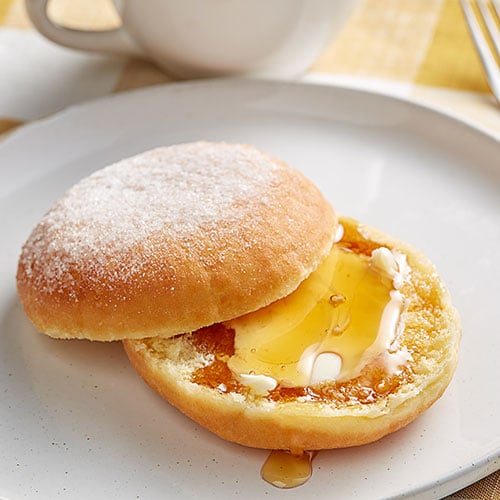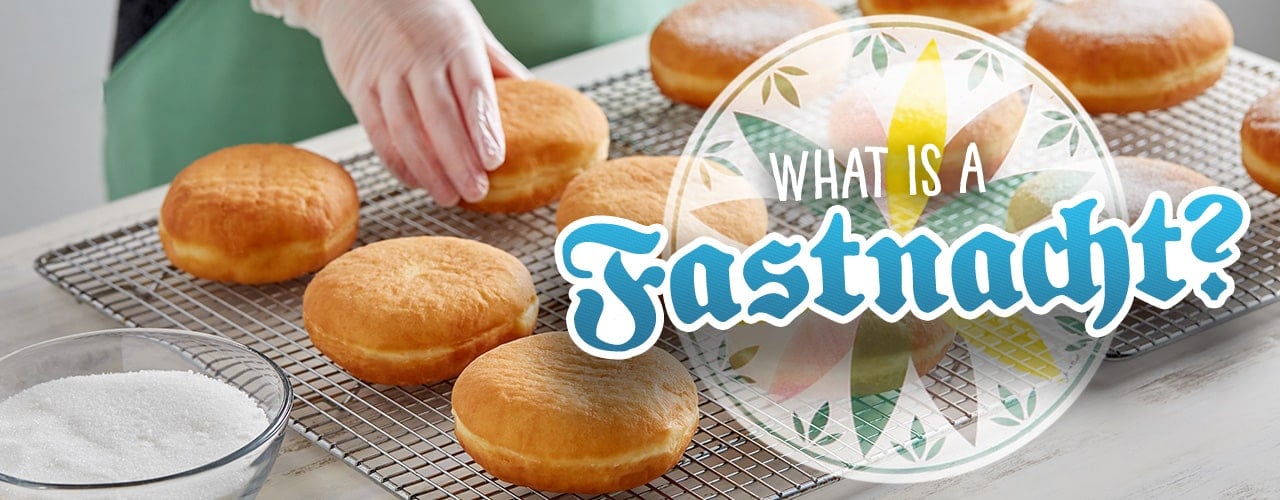A fastnacht is a heavy, yeast-raised potato donut. They are featured prominently in Pennsylvania Dutch cuisine and are considered an Easter tradition in Lancaster, York, and Berks counties in south-central Pennsylvania. These types of donuts are typically prepared on Fat Tuesday, just before the start of the Lenten season.
Traditional fastnatchts are shaped into squares or triangles, though round fastnachts are also popular. Square-shaped fastnachts are meant to represent the four gospels of the Bible, while triangular fastnachts represent the Holy Trinity. Similar to a Polish paczki, fastnachts have no hole in the center and are usually larger than other donuts.
When Is Fasnacht Day?

Fastnacht Day 2025 is Tuesday, March 4th. This food holiday is also known as Fat Tuesday, Mardi Gras, or Shrove Tuesday, which is why the delicious treats are often referred to as "Mardi Gras donuts".
Fasnacht Day is the last day before Lent, the 40-day season before Easter begins on Ash Wednesday. If you own a donut shop or bakery, serving fresh fastnachts is a great way to take advantage of the excitement around Mardi Gras.
What Does Fastnacht Mean?
The term “fastnacht” (also spelled fasnacht, faschnaut, faschnacht ) comes from the German words “fast,” a shortened form of the verb “fasten” meaning “to fast,” and “nacht,” which means “night.” Fastnacht Day is the eve of the Lenten fasting period that many Christian denominations observe. Tradition holds that on this day, households use up all the fat and sugar in the house before Lent begins. This practice also gives Fat Tuesday its name.
How To Pronounce Fastnacht
The German pronunciation of fastnacht is fahs-nahkt. In Pennsylvania Dutch country, the common pronunciation is fahs-naht.
How Are Fastnachts Usually Served?

The traditional method of eating fastnacht is to slice the donut lengthwise, spread one side with butter, and top it with maple syrup. Sandwich the two sides back together for a decadent treat. Because these Lenten donuts don’t have holes like many typical donuts, the syrup stays inside. It's also common to enjoy fastnacht donuts coated in powdered sugar or granulated sugar.
While fasnacht donuts originated in Germany, they are now a popular part of Pennsylvania Dutch culture. These Lent donuts come from the practice of eliminating fat and sugar from your household before fasting, and their rich texture makes them great treats for the Easter season. This year, consider adding fastnachts to your Fat Tuesday meal for a taste of Pennsylvania Dutch tradition.



